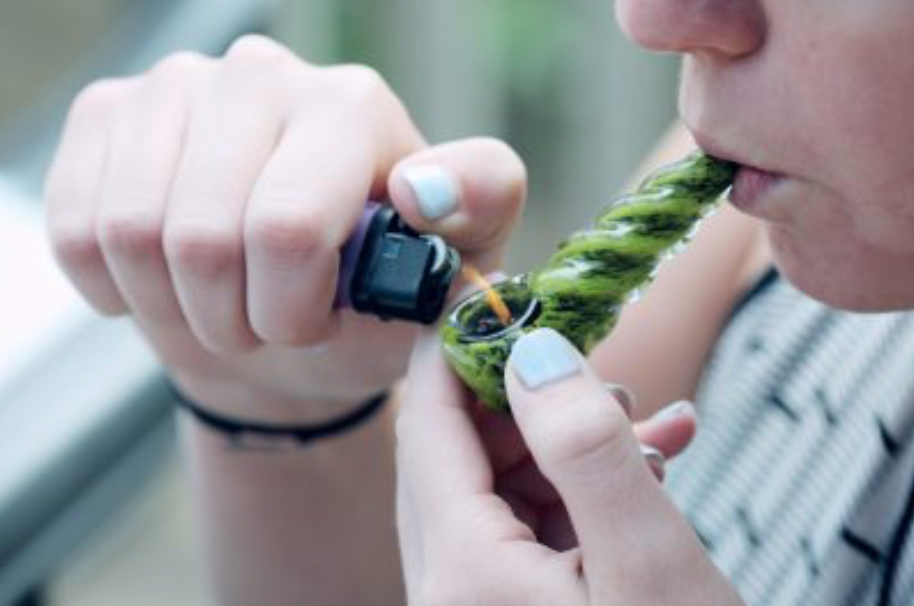Whether for managing a health condition or enjoying its effects, marijuana use depends on where the user resides.
Regardless of where you stand on the issue, there’s no denying that legal marijuana is on an upward trend. A growing number of countries, not just the United States, are showing signs to support decriminalizing the drug. Combined with the mounting evidence suggesting its health benefits, the global legal cannabis market is projected to grow by 26.4% over the rest of the decade.1
But decriminalization doesn’t necessarily mean making it fully legal. Decriminalization means the drug remains illegal in some capacity, but users will no longer be charged for possession within the limit. With more Americans getting into legal marijuana, avoiding getting in trouble with the law requires knowing this crucial fact.
This guide will explain the current status of marijuana legalization in the United States and how people can safely keep using the drug, whether for medical or recreational reasons.
Know your state
On the federal level, marijuana is and has been illegal for more than 50 years. The Controlled Substances Act of 1970 classifies it as a Schedule I drug, defined as “drugs with no currently accepted medical use and a high potential for abuse.” Marijuana is basically in the same group as LSD, ecstasy, methaqualone, and peyote.2
Efforts to federally decriminalize marijuana, including the recently introduced States Reform Act, have been met with opposition just as fervent. As such, states decide whether to allow the use of cannabis in any form. However, due to the Supremacy Clause in the Sixth Amendment, federal and state laws often conflict with one another.
In addition, some states have yet to pass their own laws decriminalizing marijuana. States where weed is legal fall under one of two subclasses. The first are states where only medical marijuana is legal and recreational marijuana is either illegal or decriminalized, which include:
- Alabama
- Arkansas
- Delaware
- Florida
- Georgia
- Hawaii
- Louisiana
- Maryland
- Minnesota
- Missouri
- New Hampshire
- North Dakota
- Ohio
- Oklahoma
- Pennsylvania
- Rhode Island
- South Dakota
- Utah
- West Virginia
The second are states where both medical and recreational marijuana is legal. Washington, DC, falls under this category, as well as the following states:
- Alaska
- Arizona
- California
- Colorado
- Connecticut
- Illinois
- Maine
- Massachusetts
- Michigan
- Montana
- Nevada
- New Jersey
- New Mexico
- New York
- Oregon
- Vermont
- Virginia
- Washington
The following states haven’t made marijuana in general legal:
- Idaho
- Indiana
- Iowa
- Kansas
- Kentucky
- Mississippi
- Nebraska
- North Carolina
- South Carolina
- Tennessee
- Texas
- Wisconsin
- Wyoming
As for US territories, marijuana is fully legal in Guam and the Northern Marianas. The US Virgin Islands legalizes medical but only decriminalizes recreational marijuana, while Puerto Rico allows medical but outlaws recreational marijuana. American Samoa prohibits the drug outright.
Hemp, CBD, and THC

There’s a long and complicated history surrounding the reasons the United States made marijuana illegal. One argument will be quick to point out its psychoactive effects on the brain, stemming from an inherent compound known as tetrahydrocannabinol (THC). According to the National Institute on Drug Abuse, an overdose of THC can result in hallucinations and loss of a sense of self.3
To accommodate the then-budding movement for legalizing marijuana, the federal government decided to draw a line between legal and illegal marijuana use. With basis on this cannabis study from 1976, it set the limit on THC to 0.3% of the drug’s dry weight. This has been the so-called magic number for anything cannabis.
While later studies have contested this figure, 0.3% will remain the threshold for current marijuana legislation in the United States. for the meantime. The limit covers pure cannabis and consumables that contain it, foodstuffs or otherwise.
However, in most states that outlaw marijuana, the law sets this figure even lower to 0.03%. The only exception is Kansas, where products must strictly contain no THC at all. Despite their stand, sometimes they allow some THC for users with medical conditions as qualified by law.
These strict measures have the industry working around them, typically harnessing THC’s less psychoactive sibling called cannabidiol (CBD). According to a report by the World Health Organization, CBD doesn’t affect the body as much as THC. If side effects of CBD intake do occur, the report states that it may be from taking it with other medications.4
But as marijuana contains more THC than CBD, the industry often uses hemp, which has more CBD than THC. Due in no small part to the 2018 Farm Bill, hemp has since been legal in all 50 states, Washington, DC, and all territories except American Samoa. Nevertheless, grown hemp and hemp-based products must still comply with the federal or state-set THC limit.
Protection not absolute
Whether or not state law protects legal marijuana use, it won’t protect users from charges like driving under the influence (DUI) and possession of firearms. In fact, doing anything while under the drug’s effects is unwise, even if it doesn’t contain THC.
Regarding DUI, driving with any amount of medical or recreational marijuana in the body is illegal in 18 states. Of these, 13 have zero-tolerance laws for DUI, and 5 have specific laws for the legal limit of THC (up to 5 nanograms). While there’s currently no adequate method of testing marijuana DUI, prosecutors may use blood tests to argue a case against the defendant.5
As for gun ownership, marijuana users are prohibited from purchasing firearms under the Federal Gun Control Act of 1968 and the Federal Omnibus Consolidated Appropriations Act of 1997. The ban extends to medical and recreational users, and denying marijuana use when applying for a firearm purchase is punishable under federal law.
There have been efforts to allow marijuana users to own firearms, one of which is the Second Amendment Protection Act (HR 2071). However, the bill has yet to move forward since its introduction to Congress in 2019.
Conclusion
Whether for managing a health condition or enjoying its effects, marijuana use depends on where the user resides. Users should make an effort to learn their respective state laws and be aware of the consequences of wrongful use. If it still feels confusing after that, there’s always the option of asking legal help to clarify things.
References
- “Legalized Cannabis Market: Countries Legalize the Consumption of Cannabis – Straits Research”, Source: https://www.globenewswire.com/en/news-release/2021/09/23/2302162/0/en/Legalized-Cannabis-Market-Countries-Legalize-the-Consumption-of-Cannabis-Straits-Research.html
- “Drug Scheduling”, Source: https://www.dea.gov/drug-information/drug-scheduling
- “What are marijuana’s effects?” https://www.drugabuse.gov/publications/research-reports/marijuana/what-are-marijuana-effects
- “CANNABIDIOL (CBD) Pre-Review Report Agenda Item 5.2”, Source: https://www.who.int/medicines/access/controlled-substances/5.2_CBD.pdf
- “Marijuana-Related Laws”, Source: https://www.ghsa.org/sites/default/files/2020-01/marijuanalaws_jan2020.pdf


Join the conversation!